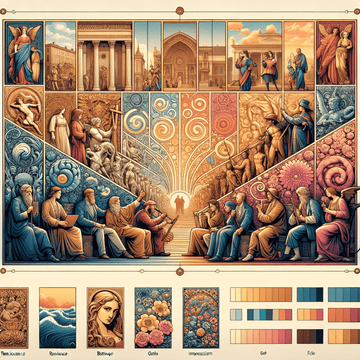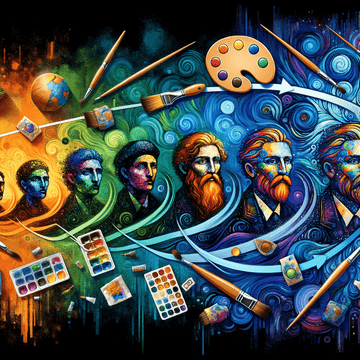"Understanding Abstract Expressionism: The Impactful Art Movement of the Mid-20th Century"
Mar 14, 2024

Exploring Emotional Depths: A Deep Dive into Abstract Expressionism
Abstract Expressionism is a modernist movement that took center stage in the art world during the mid-20th century. Marked by its focus on subjective emotional expression, it served as a conduit for artists to communicate powerful emotions and ideas. Let's embark on a journey to explore the depths and complexities of this fascinating art movement that continues to captivate art enthusiasts globally.
Birth and Evolution of Abstract Expressionism
The birth of Abstract Expressionism can be traced back to the 1940s and 1950s, in a post-World War II era. Artists were seeking new ways to express the human condition, and the result was a radical departure from traditional forms and techniques. This movement, which primarily originated in New York, is known for its emphasis on spontaneous, automatic, or subconscious creation.
Key Characteristics and Techniques
Abstract Expressionism is not defined by a single style or method. Instead, it is a term applied to a group of artists with a common philosophical approach to art. Many works in this movement feature intense color, non-traditional materials, and techniques such as dripping, staining, or even throwing paint onto the canvas. The goal? To capture raw emotion and offer the viewer a direct window into the artist's inner world.
Leading Figures and Their Impact
Artists like Jackson Pollock, Mark Rothko, and Willem de Kooning were key figures in this movement. Pollock, with his "drip paintings," challenged traditional notions of technique and form. Rothko, on the other hand, is known for his "color field" paintings that use simple, abstract forms and deep, resonant colors to provoke an emotional response. De Kooning, with his violent brushwork and dramatic forms, embodies another side of this multifaceted movement.
Abstract Expressionism Today
While the heyday of Abstract Expressionism may have passed, its influence is still seen in many contemporary works. Today's artists continue to explore the possibilities opened up by this movement, pushing the boundaries of expression and form. In this way, Abstract Expressionism continues to live on, propelling the conversation around what art is and can be.
Conclusion
Abstract Expressionism is more than just an art movement; it is an exploration of the human psyche, a dance between the conscious and unconscious. It is about the raw, unfiltered expression of emotion and the limitless possibilities of human creativity. It challenges viewers to look beyond the surface, to engage with the artwork on a deep, emotional level, and to find their own meanings in the chaos and beauty of the abstract.
Interested in exploring more art like what we've discussed today? Our collection offers a diverse range of styles, including Abstract Expressionismand beyond. Feel free to dive into our world of artistic wonders by visiting https://metalposterart.com/collections/abstract-expressionism. Whether you're looking to admire or to acquire, there's always something captivating waiting for you. We're excited to share our passion for art with you.




